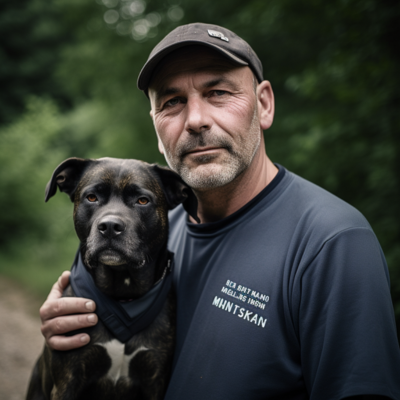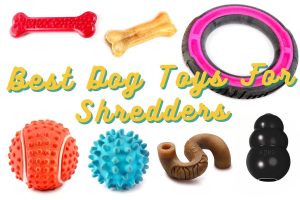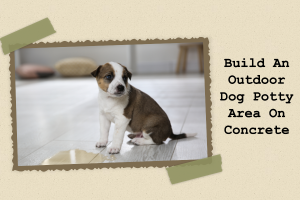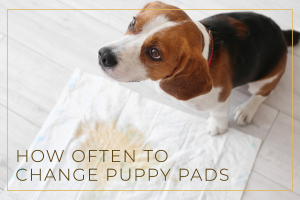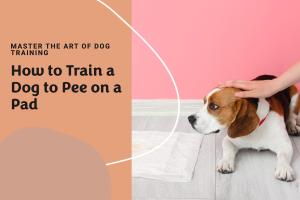Introduction
Your dog’s nail care matters a lot. Trim too much, and you could have a real “pawblem” on your hands. The quick is a sensitive tissue that can bleed and cause discomfort if cut, turning what should be a simple grooming task into a stressful ordeal for everyone involved.
In this “How to Make Dogs Quick Recede” blog, we share simple steps to help your dog’s quick recede. This guide is your ticket to understanding your dog’s paws and learning how to keep those nails trim painless and pleasant.. So, let’s read on and learn how to keep your furry friend’s feet happy and healthy!
Understanding the Dog Nail Structure
For us to effectively care for our dogs’ nails, we need a solid understanding of their structure and the crucial element known as the ‘quick’. This knowledge equips us with the skills to safely trim their nails and ensure their overall comfort and mobility.
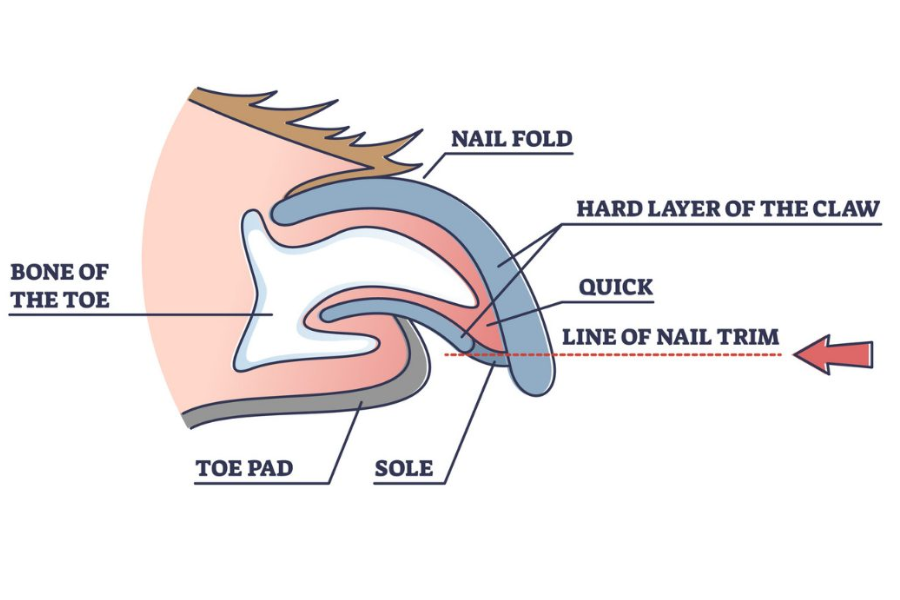
Detailed insight into the Anatomy of a Dog’s Nail
A dog’s nail is made up of two main parts: the outer shell and the quick.
The Hard Outer Shell: This is the visible part of the nail that you see. It’s constructed from keratin, the same protein that’s found in hair and nails. You may safely clip your dog’s nails here since this area of the nail lacks nerve endings and blood vessels.
The Quick: The soft cuticle containing blood vessels and nerves may be found just under the tough outer shell. The quick provides nutrients to the nail, helping it to grow strong. When clipping a dog’s nails, it’s important to avoid the quick to prevent bleeding and suffering. If you accidentally cut into the quick while trimming your dog’s nails, it can cause bleeding and pain.
How Do You Know Where the Quick is on Black Dog Nails?
The quick is easier to spot in dogs with light-colored nails, appearing as a pinkish area within the nail. Identifying the quick on black dog nails can be tricky due to visibility issues.
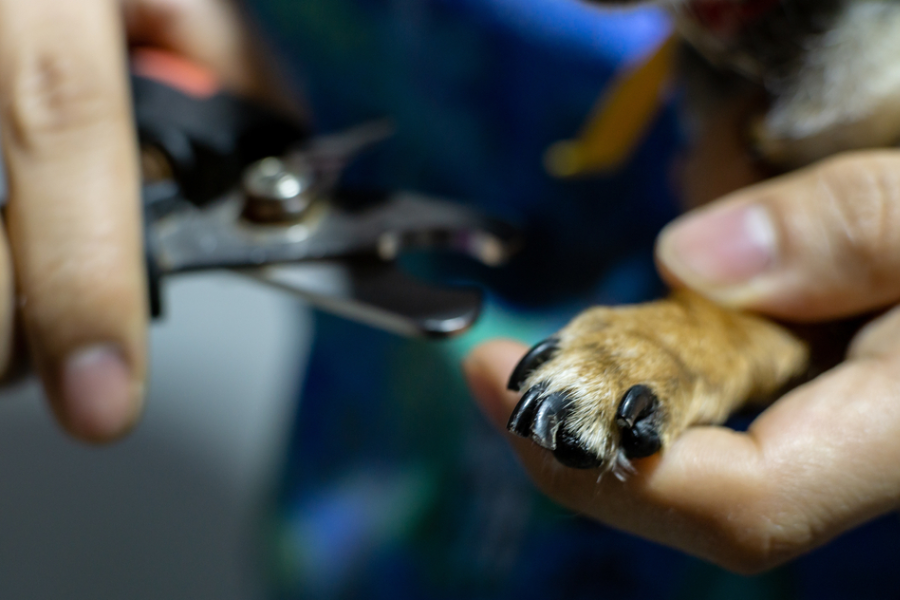
However, by carefully examining the nail under good light, we can locate a small oval area at the base of the nail – that’s the quick. For better precision, we recommend using a magnifying glass or headlamp.
Another method is to make small trims at a time, starting from the tip of the nail. As you get closer to the quick, a small, white dot will appear in the middle of the nail. This is the start of the quick, and you should stop trimming at this point.
How to Make Dogs Quick Recede?
As pet lover, we understand the importance of maintaining our dogs’ health, which includes their nails. One crucial aspect of nail care is learning how to make a dog’s quick recede. The process requires patience, a gentle touch, and persistence to ensure your furry friend’s comfort and well-being.
Step-by-step Guide on Causing a Dog’s Quick to Recede
Let’s delve into the steps to ensure your dog’s quick recedes safely:
Step 1: Start by gathering the necessary tools. A good-quality dog nail clipper and a styptic powder or pencil (for stopping bleeding in case you accidentally cut the quick) are essential.
Step 2: Make your dog comfortable. This might mean waiting until they are relaxed or even sleepy. You can also use treats as rewards to make the process more enjoyable for them.
Step 3: Hold your dog’s paw firmly but gently. Make sure you have a good grip to prevent any sudden movements.
Step 4: Identify the quick. In clear nails, it appears as a pinkish area. For black nails, you might need to make very small cuts until you see a small black dot surrounded by white – that’s the quick.
Step 5: Trim the nail slightly above the quick. Never cut into the quick as it can cause pain and bleeding.
Step 6: Repeat this process regularly. Over time, the quick will begin to recede, allowing you to cut the nails shorter.
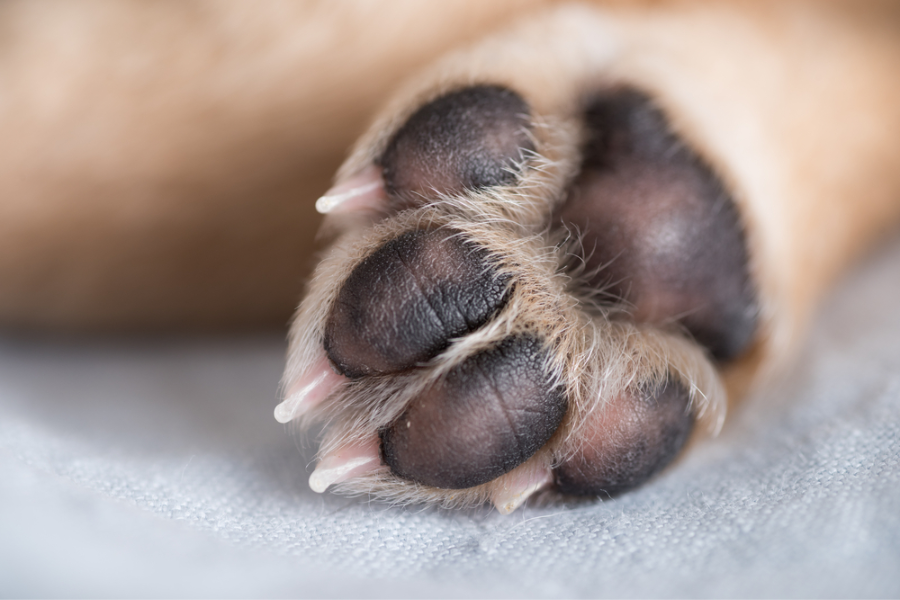
The Role of Consistent, Gradual Trimming in Quick Recession
We cannot stress enough the importance of regular and gradual trimming in making a dog’s quick recede. If your dog’s nails are overly long and the quicks extended, you won’t be able to make them short in one session. Overcutting can lead to pain, bleeding, and a nervous dog the next time you bring out the clippers.
Consistent trimming trains the quick to recede, allowing you to gradually shorten the nails. It’s a process that requires persistence, but it’s worth it for your dog’s comfort and health. Regular trimming also helps prevent nail splits or breaks, which can be painful and even lead to infections.
Remember, nail care is a vital part of dog care. By understanding how to make a dog’s quick recede and practicing regular, careful trimming, we can ensure our furry friends stay happy, healthy, and comfortable.
What is the right nail length?
Ideally, the right nail length for a dog is that the nails should be high enough that they do not touch the ground when the dog is standing.
With a properly trimmed nail, you should be able to slip a piece of paper between the nail and the ground when your dog is standing. When your dog is standing, there should be a slight space between the nail and the floor. If you can hear the nails clicking on the floor as they walk, they’re too long. The nails should be cut at a slight angle ( 45-degree angle), just in front of where the quick starts.
Tips and Solutions for Dog’s Resistant of Nail Trimming
If your dog is resistant to having its nails trimmed, it’s a common issue that many pet owners face. Here are some expert’s tips to make the process easier:
Building Trust and Comfort
If your dog isn’t used to having its paws handled, begin by gently touching and holding its paws without trimming. Do this often, and reward your dog with treats and praise to build positive associations. Always end on a positive note with plenty of praise and a treat.
Positive Association with Tools
Gradually introduce the nail trimmers by having them near your dog slowly without actually trimming. Reward calm behavior around the trimmers. Progress to touching the trimmers to your dog’s nails, then clipping just the very tip of one nail, followed by a treat. This may take several sessions over a period of time.
Some additional methods from pet owners for a more positive experience:
Distraction with Lick Mats
Smear a lick mat with peanut butter or a dog-friendly paste and offer it to your dog to lick during the nail trimming session. The licking action is soothing and can distract your dog from the nail trim.
Wrap Technique
Some dogs feel more secure when wrapped in a blanket or towel, which can have a calming effect. This technique, similar to swaddling an infant, can sometimes reduce anxiety.
Tips to Avoid Cutting the Quick
Proper nail care is crucial to your dog’s health and comfort. Learning the right techniques and understanding the tools can make the process easier and safer for both of you. In this section, we will share our knowledge and provide you with essential tips to avoid cutting the quick during nail trimming.

The Right Way to Trim Dog’s Nails
Trimming your dog’s nails correctly is not just about maintaining aesthetics; it’s about promoting good health and preventing discomfort. The first step is to ensure you have a good quality, sharp pair of dog nail clippers. Never use human nail clippers as they can splinter the nail and cause injury.
Start by holding your dog’s paw firmly but gently. Cut the nail at a 45-degree angle, taking off small amounts at a time. Always aim to cut below the quick. If you’re unsure, it’s better to trim less rather than more. Frequent, less drastic trims are better than trying to shorten the nail significantly in one go.
How Can I Shorten My Dogs Nails Without Clipping Them?
If your dog is afraid of nail clippers or you’re not confident using them, there are other ways to maintain your dog’s nails. Filing is a gentle method that can gradually shorten the nails without the risk of cutting the quick. Similarly, a nail grinder can be used to slowly and carefully reduce the nail length.
However, these methods require patience and care. Never rush the process, and always ensure your dog is comfortable and relaxed. Regular, gentle maintenance is the key to healthy, comfortable nails for your dog.
How do I stop the bleeding when trim dog’s nail?
If you accidentally cut the quick, don’t panic, here’s what you can do to stop it:
- Styptic Powder: his is the most effective and quickest way to stop the bleeding. Gently press the powder and hold for a few seconds
- Ice: Placing an ice cube on the wound or using a cold compress can cause the blood vessels to contract, reducing the rate of bleeding.
- Cornstarch or Flour: If you don’t have styptic powder, you can use cornstarch or flour. Apply a generous amount to the tip of the nail and press firmly for a couple of minutes until the bleeding stops.
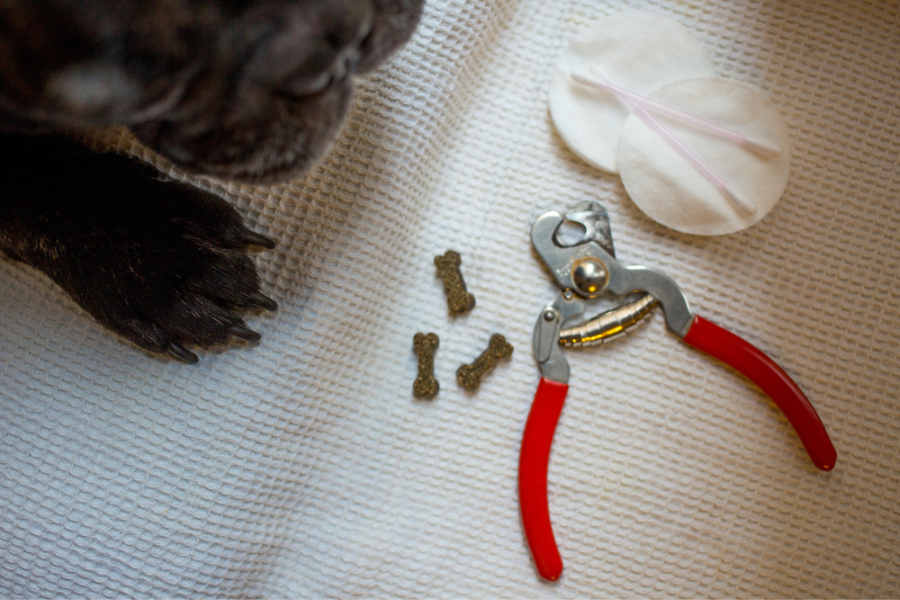
What Tools Do You Recommend for Trimming Nails?
When it comes to trimming your dog’s nails, using the right tools can make the process easier and safer for both you and your pet. Looking for the right tools to trim their dog’s nails would be to consider both the size of your dog and their tolerance for grooming.
If your dog is nervous about traditional clippers, or you’re worried about cutting too close to the quick, a nail grinder like the Dremel PawControl can be a fantastic choice. The nail may be shortened gradually, giving you more control over the procedure.
Large dogs with thick nails often benefit from the strength of scissor-type clippers, such as Millers Forge Nail Clippers, which provide a quick and clean cut. The Resco Original Deluxe Dog Nail Clippers are guillotine-style, making them more manageable for the smaller, more fragile nails of smaller dogs.
Clippers with plier handles, such as the Epica Professional Pet Nail Clipper, may be used with ease and are a suitable option for trimming the nails of dogs and cats of different sizes. You can easily maintain a firm hold and direct the blade with them.
Remember, no matter which tool you choose, it’s crucial to have styptic powder on hand, such as Kwik-Stop, to quickly address any accidental nicks. This can help stop bleeding and provide peace of mind during nail trimming sessions.
Consequences of Neglecting Dog Nail Care
Let’s talk about why looking after your dog’s nails is so important. If we don’t, it can cause some real problems for our furry friends.
Health Problems from Long Nails and Quicks
When a dog’s nails get too long, it can hurt them a lot. Imagine walking around all day in shoes that don’t fit! It’s the same for dogs. Their feet can hurt, they can walk funny, and it can even hurt their back.
And don’t forget about the quick. That’s the part inside the nail that can bleed if you cut it. If the nails are too long, the quicks are too, which makes trimming tough and sometimes painful for your pooch.

How Long Nails Change a Dog’s Behavior
When dogs are in pain, they act differently. If their nails are too long, they might feel worried all the time because of the constant discomfort. This can show up as being jumpy, licking or biting their paws too much, or even being mean.
Plus, running around with long nails is no fun. Dogs might not want to play or exercise, and that’s not good for them.
To sum it up, taking care of your dog’s nails isn’t just to make them look good. It’s about keeping them happy and healthy. Regular nail trims can stop these problems from happening. So, let’s make sure we keep those nails nice and neat!
Conclusion
We believe that understanding the quickness in your dog’s nail is critical. It’s not just about grooming. It’s about your dog’s comfort and health too. Remember, The quick is a sensitive area within your dog’s nail that requires cautious attention during trimming. Regular, gentle trimming helps the quick recede. If you’re unsure, always ask a vet or a professional groomer for advice.
It’s also key to remember that every dog is different. We trust that our recommendations and insights have been beneficial to you. We’re here to help you give the best care to your furry friend.

